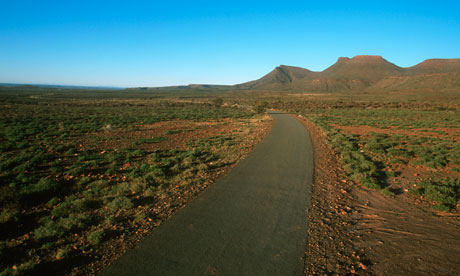
New Fracking Film Exposes Botswana’s Gas Rush
It turns out that while South Africa is hotly debating the pros and cons of fracking in the Karoo, Botswana has gone right ahead with gas extraction and quietly opened up vast areas which include some delicate ecosystems. The development has allegedly gone unchecked, and poses a grave impact on the rights of the people, […]

It turns out that while South Africa is hotly debating the pros and cons of fracking in the Karoo, Botswana has gone right ahead with gas extraction and quietly opened up vast areas which include some delicate ecosystems. The development has allegedly gone unchecked, and poses a grave impact on the rights of the people, and the health of the resources they depend on.
These and other hidden costs of the riches promised by cheap gas are exposed in a new documentary, highlighting the ‘dirty secrets’ and danger of what America’s export of fracking and natural gas technology means to Southern Africa, and the rest of the world.
View the Trailer for The High Cost Of Cheap Gas: Botswana’s Gas Rush
httpvh://youtu.be/nPPZZu24gBs
The film investigates the latest science behind the fracking industry, from America’s gas fields to Africa’s deserts, and concludes that fracking brings only short term benefits to a few…and instead is damaging to water resources, causes dangerous air pollution, and the contamination of plants and animals.
According to the film’s Facebook page, TheHighCostofCheapGas, Maritfie Staander from the University of Stellenbosch has said “We’ve been doing a lot of work for the Cancer Association of South Africa. They are worried about the water quality in the Karoo if this fracking process is going to happen, because most of those chemicals can cause cancer.”
Whilst the documentary-makers are being applauded by many, not everyone’s a fan. One user, John Marshall, left the following comment on FB: “Lots of issues with this video. True, the production of water from coalbed methane can lower the water table. But there is no info in this video of testing of the water. Is it potable? If so, it can be used to develop land and provide water to locals. Is it non-potable? If so it can’t be used anyway and lowering the water table isn’t an issue. Regardless, if non-potable it should be disposed of properly, NOT be disposed of on the surface or into shallow aquifers. And Udall’s comments about flowback water might better pertain to shale completions, not CBM completions.”
